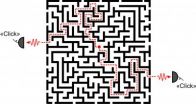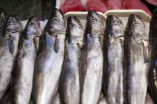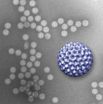(Press-News.org) The research group of Professor Petri Pihko at the Department of Chemistry and the NanoScience Center of the University of Jyväskylä has solved two acute problems in chemical catalysis. The research has been funded by the Academy of Finland.
In the first project, the researchers designed a novel intramolecularly assisted catalyst for the synthesis of beta amino acids. Previously published catalysts work only with aromatic side chains in the imines, but the new catalyst designed at Jyväskylä does not have this limitation. The new method might find uses in the synthesis of beta amino acids, which are important building blocks for chemical biology. For the understanding of the catalytic mechanism and design of the catalyst, the researchers collaborated with the group of Imre Pápai (Hungarian Academy of Sciences, computational studies) and Academy Professor Kari Rissanen (Jyväskylä, X-ray characterisation of catalysts).
In the second project, the researchers identified a completely new mechanism for the amine-catalysed Michael addition reaction between aldehydes and nitroalkenes. The mechanism has been a source of intense discussion within the scientific community, with the groups of Professor Yujiro Hayashi (Tokyo), Professor Donna Blackmond (La Jolla, USA) and Professor Dieter Seebach (ETH, Switzerland) each presenting different possible mechanisms.
The new model proposed by the Pihko and Papai groups includes a new species, a six-membered ring, as the key on-cycle intermediate that is protonated in the rate-determining step. The work is a combination of computational and experimental studies that complement each other in understanding the mechanism and demonstrate how difficult mechanistic puzzles can be solved by joining the forces of both approaches.
INFORMATION:
The research results have been published in Angewandte Chemie.
http://dx.doi.org/10.1002/anie.201204833
http://dx.doi.org/ 10.1002/anie.201203852
More information: Professor Petri Pihko
2 problems in chemical catalysis solved
University of Jyvaskyla Department of Chemistry and NanoScience Center
2012-12-20
ELSE PRESS RELEASES FROM THIS DATE:
Stroke drug kills bacteria that cause ulcers and tuberculosis
2012-12-20
Bethesda, MD—A drug currently being used to treat ischemic strokes may prove to be a significant advance in the treatment of tuberculosis and ulcers. In a new research report appearing online in The FASEB Journal, a compound called ebselen effectively inhibits the thioredoxin reductase system in a wide variety of bacteria, including Helicobacter pylori which causes gastric ulcers and Mycobacterium tuberculosis which causes tuberculosis. Thioredoxin and thioredoxin reductase proteins are essential for bacteria to make new DNA, and protect them against oxidative stress caused ...
UGA research offers new targets for stroke treatments
2012-12-20
Athens, Ga. – New research from the University of Georgia identifies the mechanisms responsible for regenerating blood vessels in the brain.
Looking for ways to improve outcomes for stroke patients, researchers led by the UGA College of Pharmacy assistant dean for clinical programs Susan Fagan used candesartan, a commonly prescribed medication for lowering blood pressure, to identify specific growth factors in the brain responsible for recovery after a stroke.
The results were published online Dec. 4 in the Journal of Pharmacology and Experimental Therapeutics.
Although ...
Virtual reality and robotics in neurosurgery -- promise and challenges
2012-12-20
Philadelphia, Pa. (December 20, 2012) – Robotic technologies have the potential to help neurosurgeons perform precise, technically demanding operations, together with virtual reality environments to help them navigate through the brain, according to a special supplement to Neurosurgery, official journal of the Congress of Neurological Surgeons. The journal is published by Lippincott Williams & Wilkins, a part of Wolters Kluwer Health.
"Virtual Reality (VR) and robotics are two rapidly expanding fields with growing application within neurosurgery," according to an introductory ...
The paths of photons are random -- but coordinated
2012-12-20
Researchers at the Niels Bohr Institute have demonstrated that photons (light particles) emitted from light sources embedded in a complex and disordered structure are able to mutually coordinate their paths through the medium. This is a consequence of the photons' wave properties, which give rise to the interaction between different possible routes. The results are published in the scientific journal, Physical Review Letters.
The real world is complex and messy. The research field of photonics, which explores and exploits light, is no exception, and in, for example, biological ...
Italian wolves prefer pork to venison
2012-12-20
Some European wolves have a distinct preference for wild boar over other prey, according to new research.
Scientists from Durham University, UK, in collaboration with the University of Sassari in Italy, found that the diet of wolves was consistently dominated by the consumption of wild boar which accounted for about two thirds of total prey biomass, with roe deer accounting for around a third.
The study analysed the remains of prey items in almost 2000 samples of wolf dung over a nine year period and revealed that an increase in roe deer in the wolf diet only occurred ...
33 new trapdoor spider species discovered in the American southwest
2012-12-20
A researcher at the Auburn University Museum of Natural History and Department of Biological Sciences has reported the discovery 33 new trapdoor spider species from the American Southwest. These newly described species all belong to the genus Aptostichus that now contains 40 species, two of which are already famous – Aptostichus stephencolberti and Aptostichus angelinajolieae.
The genus now includes other such notable species as Aptostichus barackobamai, named for Barack Obama, the 44th President of the United States, and reputed fan of Spiderman comics; Aptostichus edwardabbeyi, ...
Cellphone data helps pinpoint source of traffic tie-ups
2012-12-20
CAMBRIDGE, Mass. -- In most cities, traffic growth has outpaced road capacity, leading to increased congestion, particularly during the morning and evening commutes. In 2007, congestion on U.S. roads was responsible for 4.2 billion hours of additional travel time, as well as 2.8 billion gallons of fuel consumption and an accompanying increase in air pollution.
One way to prevent traffic tie-ups is to have fewer cars on the road by encouraging alternatives such as public transportation, carpooling, flex time and working from home. But a new study — by researchers at MIT, ...
Spanish consumers prefer national fish
2012-12-20
What is most important when buying fish: the price, the country of origin, whether it is fresh or frozen or whether it is wild or farm-raised? The average Spanish consumer prefers above all that their fish comes from Spain, according to a study published in the 'Food Quality and Preference' journal. Spain is the largest producer of fish in the European Union but in recent years its population has consumed less fish, especially seafood.
A team of scientists brought together nearly 900 consumers from nine Autonomous Communities (Andalusia, Asturias, the Balearic Islands, ...
MIT researchers discover a new kind of magnetism
2012-12-20
CAMBRIDGE, Mass. -- Following up on earlier theoretical predictions, MIT researchers have now demonstrated experimentally the existence of a fundamentally new kind of magnetic behavior, adding to the two previously known states of magnetism.
Ferromagnetism — the simple magnetism of a bar magnet or compass needle — has been known for centuries. In a second type of magnetism, antiferromagnetism, the magnetic fields of the ions within a metal or alloy cancel each other out. In both cases, the materials become magnetic only when cooled below a certain critical temperature. ...
A nanoscale window to the biological world
2012-12-20
If the key to winning battles is knowing both your enemy and yourself, then scientists are now well on their way toward becoming the Sun Tzus of medicine by taking a giant step toward a priceless advantage – the ability to see the soldiers in action on the battlefield.
Investigators at the Virginia Tech Carilion Research Institute have invented a way to directly image biological structures at their most fundamental level and in their natural habitats. The technique is a major advancement toward the ultimate goal of imaging biological processes in action at the atomic ...
LAST 30 PRESS RELEASES:
Making lighter work of calculating fluid and heat flow
Normalizing blood sugar can halve heart attack risk
Lowering blood sugar cuts heart attack risk in people with prediabetes
Study links genetic variants to risk of blinding eye disease in premature infants
Non-opioid ‘pain sponge’ therapy halts cartilage degeneration and relieves chronic pain
AI can pick up cultural values by mimicking how kids learn
China’s ecological redlines offer fast track to 30 x 30 global conservation goal
Invisible indoor threats: emerging household contaminants and their growing risks to human health
Adding antibody treatment to chemo boosts outcomes for children with rare cancer
Germline pathogenic variants among women without a history of breast cancer
Tanning beds triple melanoma risk, potentially causing broad DNA damage
Unique bond identified as key to viral infection speed
Indoor tanning makes youthful skin much older on a genetic level
Mouse model sheds new light on the causes and potential solutions to human GI problems linked to muscular dystrophy
The Journal of Nuclear Medicine ahead-of-print tip sheet: December 12, 2025
Smarter tools for peering into the microscopic world
Applications open for funding to conduct research in the Kinsey Institute archives
Global measure underestimates the severity of food insecurity
Child survivors of critical illness are missing out on timely follow up care
Risk-based vs annual breast cancer screening / the WISDOM randomized clinical trial
University of Toronto launches Electric Vehicle Innovation Ontario to accelerate advanced EV technologies and build Canada’s innovation advantage
Early relapse predicts poor outcomes in aggressive blood cancer
American College of Lifestyle Medicine applauds two CMS models aligned with lifestyle medicine practice and reimbursement
Clinical trial finds cannabis use not a barrier to quitting nicotine vaping
Supplemental nutrition assistance program policies and food insecurity
Switching immune cells to “night mode” could limit damage after a heart attack, study suggests
URI-based Global RIghts Project report spotlights continued troubling trends in worldwide inhumane treatment
Neutrophils are less aggressive at night, explaining why nighttime heart attacks cause less damage than daytime events
Menopausal hormone therapy may not pose breast cancer risk for women with BRCA mutations
Mobile health tool may improve quality of life for adolescent and young adult breast cancer survivors
[Press-News.org] 2 problems in chemical catalysis solvedUniversity of Jyvaskyla Department of Chemistry and NanoScience Center



